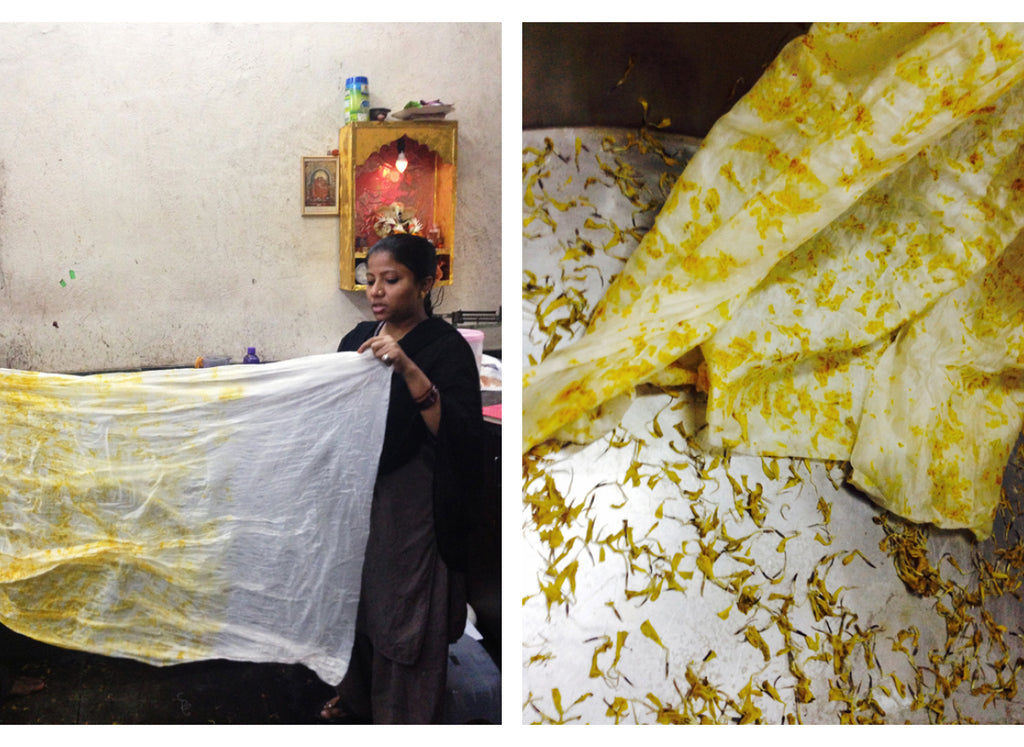Explorers ruffled through sagebrush in the desert and bent in careful weight to extract dried fossil stones, stick-like flora and ever present sand blooms. Succulent stems with bright poppy tonality served as the single color interruption save for the melting oasis of the sky. French botanists conserved delicate petals by pressing them into leather bound books of parchment. They engaged gauzy tape and straight pins to label specimens with names reminiscent of ancient foreign poems.

Every form of vegetable, flora and mineral has served as an ancient elixir to age-old dye habits. Flowers take baths in deep bowls and shed their inky pigments to create a casted wash. Florets are pressed into porous muslin taking on traces from petal to stem; organic textured imprints are inherently one-of-a-kind. Steaming the muslin flower packets permanently solidifies the bloom’s color commitment.
Harvard Art Museum houses an incomparable pigment library largely constructed by the efforts of Edward Forbes, who began procuring samples in the early twentieth century from his travels to the far ends of the earth. Using glass tincture bottles, he stored rare lapis lazuli from excavated sites at Pompeii, a dark brown pigment harvested from Egyptian mummy wrappings and famed Cadmium Yellow beloved by artists despite its toxic chemical makeup. There are 2,500 pigments in this rare and precious effort to capture color history.

Devoted to garment making with integrity and natural properties, Christina Kim of dosa, has offered her own textiles up for a floral elixir. Garments treated with natural dye techniques and floral acts emulate the shape of kimono robes and delicate slip dresses. Seemingly antique cotton dresses exhibit ruffles and tucks with blushing reserve.
If your silhouette is graced in florals mixed with sweeping shapes and dropped hems, your steps may become strides alighting the steps of a Japanese Pavilion. You may turn deep pigments inward and take a conservatory as your new idlewild site of favor; the settings and trappings of botanical elegance.
Words by Brit Parks


